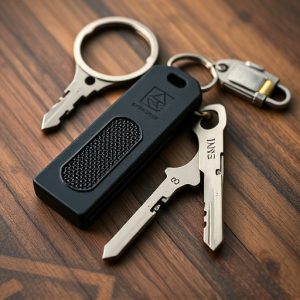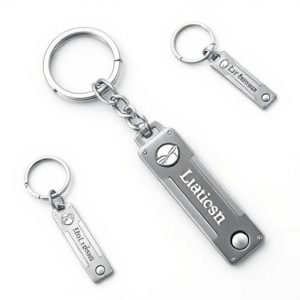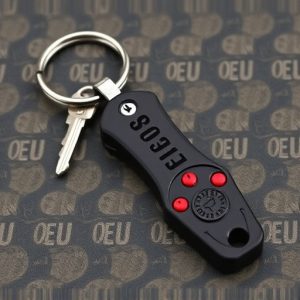Keychain Self-Defense Spike Tool Legal Requirements: A Global Check
The legal status of keychain self-defense spike tools varies globally, with regulations focusing on…….
The legal status of keychain self-defense spike tools varies globally, with regulations focusing on permit requirements, weapon design, and advertising restrictions. Users and manufacturers must understand local laws regarding carry permissions, tool classifications, and storage practices to ensure compliance and personal safety. Regional differences, particularly between Western, Asian, and Middle Eastern nations, require travelers and expatriates to consult official resources or seek legal advice.
Staying safe while on the go has never been more important. For those seeking a discreet yet powerful personal defense tool, keychain self-defense spike devices offer a compelling option. But navigating legal requirements can be challenging. This article guides you through the intricate world of keychain self-defense spike tool regulations, delving into legal considerations for carrying these devices and exploring regional differences globally. By understanding compliance tips, you’ll ensure responsible carry and storage, staying protected with peace of mind.
- Understanding Keychain Self-Defense Spike Tool Regulations
- Legal Considerations for Carrying Self-Defense Devices
- Regional Differences in Legislation: A Global Perspective
- Ensuring Compliance: Tips for Responsible Carry and Storage
Understanding Keychain Self-Defense Spike Tool Regulations
The legal landscape surrounding keychain self-defense spike tools varies across jurisdictions, so understanding the regulations is crucial for both manufacturers and users. These small, portable devices are designed to act as a deterrent against potential attackers by causing discomfort or injury when activated. Many countries have specific laws governing the carrying of such tools, including restrictions on where and how they can be used. For instance, some regions require users to have a permit or license to carry a keychain self-defense spike tool, while others may limit their availability to certain professions or individuals for self-protection purposes.
When assessing the legal requirements, it’s essential to consider the weapon’s design, purpose, and potential impact. Keychain self-defense spike tools must meet specific safety standards to ensure they function as intended without causing unnecessary harm. Regulations often dictate the type of spikes, their length, and the overall construction to minimize collateral damage and reduce risks associated with misuse. Additionally, there may be restrictions on advertising and packaging to prevent the normalization of such devices as everyday carry items.
Legal Considerations for Carrying Self-Defense Devices
Carrying self-defense devices, such as a keychain self-defense spike tool, comes with legal considerations that vary significantly by jurisdiction. It’s essential to understand local laws and regulations to ensure compliance and personal safety. Many countries and states have specific rules regarding what constitutes a lawful self-defense device and where it can be carried. For instance, some areas may permit these tools only in certain locations like your home or vehicle, while others might allow open carry or require them to be stored in a locked container.
Knowing the legal limits is crucial for avoiding unwanted legal repercussions. Carrying a self-defense device openly in public may be prohibited or limited to specific circumstances, so it’s vital to check local ordinances. Some regions also have restrictions on the type and size of self-defense tools, with certain devices being classified as illegal weapons. Staying informed about these legal considerations can help ensure that your right to protect yourself is balanced with public safety regulations.
Regional Differences in Legislation: A Global Perspective
In the global landscape, the legal requirements for keychain self-defense tools like spike devices vary widely from region to region. What may be permitted in one country could be strictly regulated or even illegal in another. For instance, many Western countries have more lenient laws regarding personal defense tools, allowing citizens to carry certain types of keychains designed for self-protection. In contrast, many Asian and Middle Eastern nations have stricter controls, often requiring permits or registering such devices with law enforcement.
Understanding these regional differences is crucial when considering the legality of a keychain self-defense spike tool. Travelers and expatriates must stay informed about local regulations to avoid legal repercussions. Even for those not traveling, purchasing such tools online from international sellers can raise questions of admissibility and customs clearance. Thus, it’s essential to consult official government resources or seek legal advice when navigating the complexities of global keychain self-defense legislation.
Ensuring Compliance: Tips for Responsible Carry and Storage
When carrying a keychain self-defense spike tool, it’s crucial to understand and adhere to legal requirements to ensure compliance with local regulations. Different regions have varying rules regarding defensive tools, so responsible carriers must stay informed. One essential tip is to familiarize yourself with the definition of a ‘self-defense’ tool in your area; this understanding will help you determine if your keychain spike is legally categorized as such.
Additionally, proper storage is vital. Keep your keychain tool in a secure location, out of reach of unauthorized individuals. Consider using a locked drawer or safe to store it, especially if children or curious visitors are present. Regularly check local laws and update your storage practices accordingly, ensuring you remain on the right side of the law while prioritizing your safety.
When considering carrying a keychain self-defense spike tool, it’s crucial to understand and comply with local legal requirements. Regulations vary globally, but staying informed about your region’s legislation is essential for responsible carry and storage. By understanding these legal considerations, you can ensure compliance and peace of mind while protecting yourself in unexpected situations. Remember, the key to safe self-defense is knowledge and responsibility.


